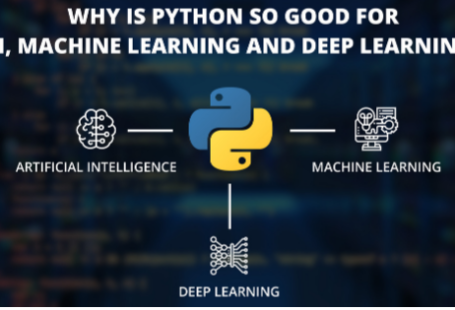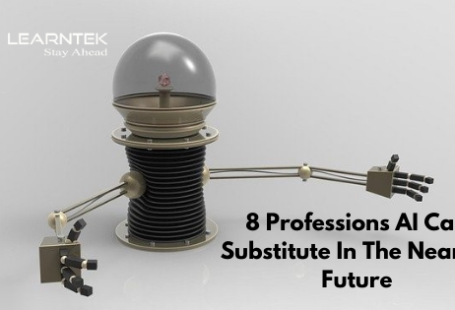Machine Learning and Artificial Intelligence
Difference between Machine Learning and Artificial Intelligence : Okay Google! What’s Up? Could you play my favourite track or Book a Cab from Palace Road to MG Road.
Alexa, What time it is? Wake me up at 5AM. Could you please tell my tomorrow meetings.
These are the perfect combination of Machine Learning and Artificial Intelligence.
- Machine learning:
Machine learning is a method of data analysis that automates analytical model building. Machine learning is a field that uses algorithms to learn from data and make predictions. Machine learning is an application of artificial intelligence that provides systems the ability to automatically learn and improve from experience without being explicitly programmed. Machine learning focuses on the development of computer programs that can access data and use it learn for themselves.
Practically, this means that we can feed data into an algorithm, and use it to make predictions about what might happen in the future. It is a branch of artificial intelligence based on the idea that systems can learn from data, identify patterns and make decisions with minimal human intervention.
- Artificial Intelligence:
Artificial Intelligence (AI) is the study and design of Intelligent agent, These intelligent agents have the ability to analyse the environments and produce actions which maximize success. AI research uses tools and insights from many fields, including computer science, psychology, philosophy, neuroscience, cognitive science, linguistics, operations research, economics, control theory, probability, optimization and logic. Artificial Intelligence is based on the study that how human thinks, learn, decide and work in order to resolve an issue and then using the outcome of this study as a basis of developing intelligent software and systems.
- Different Techniques of Machine Learning:
Machine Learning uses two types of techniques.
- Supervised Learning
- Unsupervised Learning

Supervised Learning: Supervised learning is where you have input variables (x) and an output variable (Y) and you use an algorithm to learn the mapping function from the input to the output Y = f(X). Supervised machine learning systems provide the learning algorithms with known quantities to support future judgments. Supervised learning is typically done in the context of classification, when we want to map input to output labels, or regression, when we want to map input to a continuous output.
- Classification: Classification predictive modelling is the task of approximating a mapping function (f) from input variables (X) to discrete output variables (y). Classification algorithms are used when the desired output is a discrete label. A classification problem is when the output variable is a category, such as “red” or “blue” or “disease” and “no disease”. A classification model attempts to draw some conclusion from observed values.
- Regression: Regression predictive modelling is the task of approximating a mapping function (f) from input variables (X) to a continuous output variable (y). Regression is useful for predicting outputs that are continuous. A regression problem is when the output variable is a real or continuous value, such as “salary” or “weight”.
Unsupervised Learning: Unsupervised Learning is a class of Machine Learning techniques to find the patterns in data. Unsupervised learning is where you only have input data (X) and no corresponding output variables. The goal for unsupervised learning is to model the underlying structure or distribution in the data in order to learn more about the data. Unsupervised machine learning algorithms infer patterns from a dataset without reference to known, or labelled, outcomes.
- Clustering is the most common unsupervised learning technique. Clustering allows you to automatically split the dataset into groups according to similarity. It is used for exploratory data analysis to find hidden patterns or groupings in data.
- Companies working on Machine Learning and Artificial Intelligence:
Amazon : Amazon a way ahead in implementing Machine Learning. Amazon is leading the way in using machine learning insights. Amazon is using to enhance their customer’s interaction with infallible customer service. At customer service, they use machine learning to anticipate customer issues, identify right workflows to resolve and in some cases detect abuse of services as well.
Facebook : Facebook is an American online social media and social networking service company based in Menlo Park, California. Facebook has more than 2 billion monthly active users as of June 2017.
Microsoft : Microsoft has actually been the third-biggest spender on acquisitions over the past five years, according to CB Insights. The company is well and truly into the internet market, especially after its $26 billion purchase of LinkedIn a couple of years ago. Microsoft develops, manufactures, licenses, supports and sells computer software, consumer electronics, personal computers, and services.
Google : Google is not limited as a search engine. Google has lots of thing for Artificial Intelligence and Machine Learning. Google is extensively working on Machine Learning and Artificial Intelligence to bring revolution in Engineering.
- Machine Learning and Artificial Intelligence Global Scenario:
Machine learning is fast becoming a reality for forward-thinking organizations. IDC forecasts revenues for Artificial Intelligence systems worldwide will almost double to $12.5 billion this year, and keep growing at a similar rate until they hit $46 billion in 2020. Machine learning is the latest approach to digital transformation, making our computing processes more efficient, cost-effective, and reliable.
- Machine Learning and Artificial Intelligence extensively Used :
- Natural Language processing (NLP) are used for voice recognition in call-centres and Automated caller machines
- Virtual Personal : Siri, Alexa, Google, Crotona are some of the popular examples of virtual personal assistants
- App based taxi – While booking a cab, the app estimates the price of the ride and estimated time arrival
- Video surveillance system – It is powered by AI that makes it possible to detect crime before they happen
- Social Media Services – It provides features like face recognition, People you may know, Similar Pin
- Email Spam and Malware filtering for you inbox
- Online customer support to advanced chatbots.
- Shopping experiences with product recommendations
- Difference Between Machine Learning and Artificial Intelligence:







